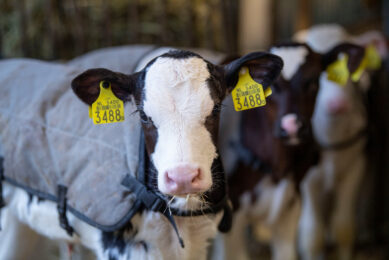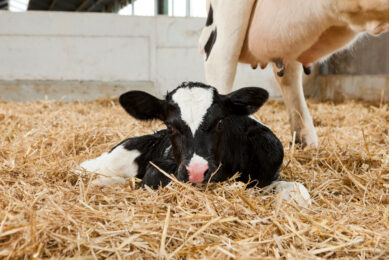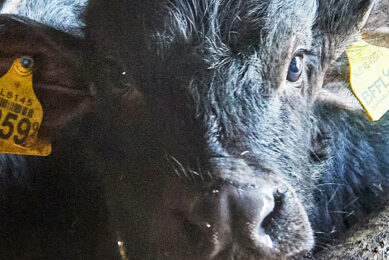Re-evaluating dairy calf nutrition for long-term benefits
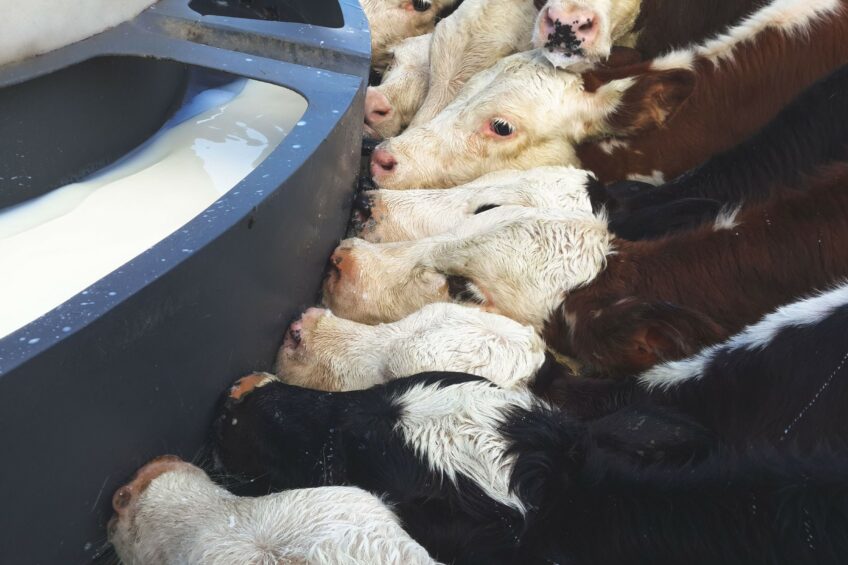
New Australian research looks at the nutrition a calf receives early in its life and the positive influence on overall health and resilience as it grows and gets ready to join the milking herd.
The University of Melbourne PhD candidate Emma Ockenden has spent the last 3.5 years examining the impact of 2 different feeding strategies on calf immune responses pre and post weaning. She says that successful calf rearing means that calves grow well and remain healthy even when exposed to infections.
In Australia, dairy calf morbidity and mortality rates are around twice industry targets (morbidity 23.8% with a <10% target; mortality 5.6% with <3% target). Recent research has therefore called for a re-evaluation of management strategies for rearing replacement heifers to reduce calf morbidity and mortality rates.
Current recommendations prioritise keeping labour and feed costs to a minimum by limiting milk consumption to 10% of birth body weight daily with the aim of increasing concentrate intake to ultimately promote early weaning.
Behaviours associated with hunger
According to research, it has been widely demonstrated that calves with access to milk ad libitum consume 50-90% more milk than recommended feeding levels, while those rationed to current recommendations show behaviours associated with hunger.
Early life nutrition is widely understood to affect the development of physiological systems in all species. Optimising early life development in dairy calves has been shown to have both short and long-term benefits on health, welfare and production.
Improved nutrition in the pre-weaning phase has been shown to increase growth rates, decrease disease susceptibility and mortality and, in turn, increase economic benefits with reduced veterinary costs and fewer animal losses. In the long term, these benefits are also evident through increased milk production.
The results of Ockenden’s research show that the level of milk fed pre-weaning has long-term impacts on that animal’s immune system. Current industry standard is a minimum of 4 litres of milk fed daily to calves from birth until weaning.
Higher levels of milk
Recent years have seen Australian dairy farmers examine their feeding routines and take up accelerated feeding for an increased level of nutrition. One accelerated method involves feeding calves at least 8 litres of milk a day from a few days after birth until weaning.
Ockenden wanted to see if feeding higher levels of milk in early life would impact how the immune system of those dairy calves responded compared to calves fed at the current industry standard.
The researchers measured the immune response during the pre-weaning phase via a blood test before and after vaccination of the calves. “A superior response to the vaccine correlates to an animal that is more resilient, and we wanted to see if the level of nutrition or volume of milk fed to the calves influenced this,” Ockenden explains.
Results of the blood test showed that the calves fed the higher volume of milk had a superior immune response than those that were fed at the industry standard. The experiment enlisted 20 Holstein-Friesian dairy replacement calves from birth until weaning (at 10 weeks of age). It assessed the effect of feeding either 4 litres (Low) or 8 litres (High) of milk per calf per day on their growth, immune competence and metabolic characteristics.
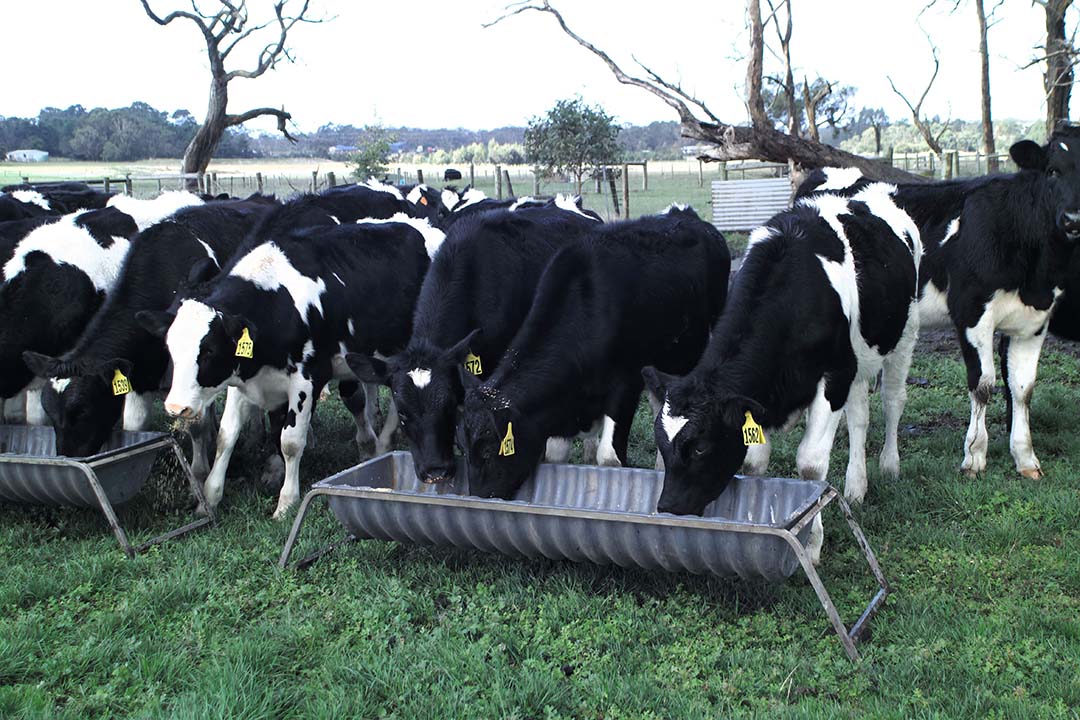
Positive impact on calves
The responsiveness of these systems was compared through a vaccination immune challenge. Calves in the High treatment group were significantly heavier from 2 weeks of age and were 19 kg heavier than calves in the Low treatment group at weaning.
Calves in the High treatment group also exhibited greater immune responses, with significantly higher white cell counts and neutrophil counts than calves in the Low treatment group post-vaccination.
Calves in the High treatment group also had lower beta-hydroxybutyrate both pre and post-vaccination and higher glucose and insulin levels post vaccination, indicating superior metabolic characteristics.
Calves had ad libitum access to lucerne hay (Medicago sativa) and a commercial concentrate. Solid feed intake was mostly the same between treatments, with differences in hay intake only detected at 7 and 8 weeks of age. Results from this experiment indicate a positive influence of accelerated pre-weaning nutrition on growth, immune response and metabolic characteristics.
Post weaning
While the increased amount of milk fed to the calves paid off with higher growth rates and improved immune responses in dairy calves reaching weaning, Ockenden was also interested in what happens to these calves post weaning.
Post weaning, pasture-based heifers are typically put out to pasture in paddocks away from the main milking herd or put on agistment properties where they receive less intensive management. This led Ockenden to examine whether the accelerated method of feeding calves had longer term responses or effects post-weaning.
Post-weaning, these groups were all reared as per normal farm practice. The research showed that calves fed at the higher level of milk pre-weaning still had a better immune response regardless of their post-weaning feeding regime.
“We repeated the immune response challenge post weaning when calves received a booster vaccination at 12 months of age. Even though the calves fed at industry standard pre weaning had caught up to the other calves in weight, they still did not display the same level of immune response that the accelerated milk-fed calves showed,” Ockenden says.
Superior immunity
Dairy Australia says farmers should consider their calf feeding practices, and whether the amount of milk being fed could be increased. “If you increase the amount of milk fed pre weaning, you still need to keep your focus on consistent growth over the first 2 years of life,” Dairy Australia says.
“It is likely that this superior immunity will pay off as cows that are better able to resist disease will be more likely to produce high levels of milk, calve each year without difficulty, and remain in the herd for long time.”
The calves involved in Ockenden’s research are now in the milking herd at Agriculture Victoria’s Ellinbank SmartFarm, where their performance will continue to be monitored to determine their milk production and other impacts that early life nutrition can have over the life of the cow. This research will form part of the Dairy Feedbase 23-28 research programme, which commenced in July 2023.
Dairy Australia emphasises that the way all calves are cared for on dairy farms can have major and long-lasting effects not only at the farm level but throughout the entire industry, where issues such as animal welfare, animal diseases and food safety can have significant consequences.
Join 13,000+ subscribers
Subscribe to our newsletter to stay updated about all the need-to-know content in the dairy sector, two times a week.




